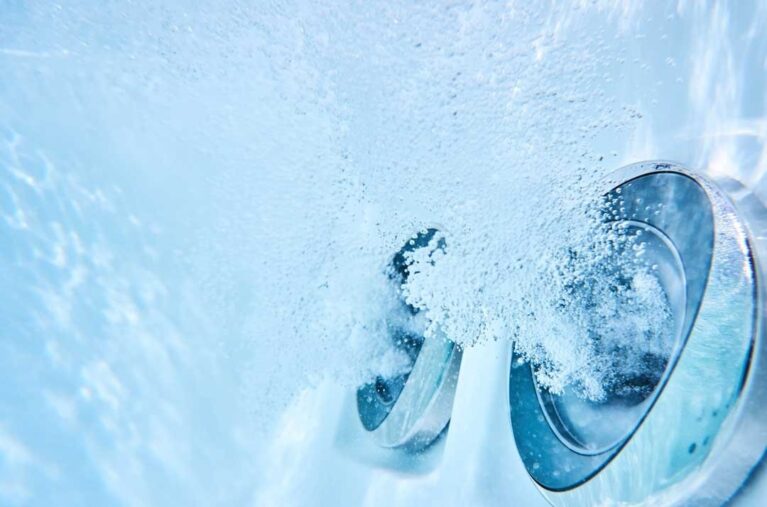Comparing Inflatable Hot Tubs to Hard Shell Hot Tubs
So what are the key things to consider when weighing up whether you want to invest in an inflatable hot tub or a proper Hard-Shell Hot tub. Price is typically the first thing everyone focuses on and of course the initial outlay for an inflatable spa can be very attractive, typically as little as £300. However, in recent years the cost of a traditional hard-shell hot tub has come down and an entry range model can now be bought for under £3000, no longer the rich man’s toy.
The initial purchase price is only one part of the cost though, running costs are a more significant factor which many purchasers fail to consider. A typical inflatable spa will cost its owner in the region of £3 a day to keep it heated. A similar sized hard-shell hot tub with its superior insulation and efficient pumps can be as little as 50 pence a day. That is a difference of over £900 a year!
You then have to consider when you wish to use your Hot Tub. For many owners, the favourite time of the year to use their spa is in the winter when the air is cold and crisp. There is nothing better than being sat in 40-degree Celsius water with a white snow scene laid around you. This won’t be the case in you have an inflatable spa though as the manufacturers recommend you pack your spa away when outside temperatures are likely to drop to 4-degrees Celsius or below. In most of the UK, that is the norm between November and April.
The bane of most inflatable spa owners’ lives is punctures. There is nothing more deflating than looking forward to a soak at the end of the day to only find a soggy patio and a half-inflated spa. Yes you can repair them but sadly punctures happen all too frequently.
Most hard-skinned tubs a made with hydrotherapy in mind. Typically, a spa will have multiple jet pumps which circulate the heated water through a variety of jets which can provide an enjoyable massage. The strength of this massage can usually be adjusted using the spas divertors, air controls or individual jet controls. Most spas will have a variety of seats within them to offer a different experience from the lay back lounger to the enveloping massage chair. With an inflatable spa, there is normally no seats as such, and bathers sit on the floor of the tub. Hydrotherapy is via an air pump introducing cold air bubbles into the tub which is another reason running costs are higher on an inflatable spa.
So should you invest in a soft-skinned tub? If you have wet tested a traditional hard-skinned tub with your local dealer and are still not sure that the hot tub lifestyle is for you, then maybe. If however you know that Hot Tubbing is for you, a hard-skinned tub is nearly always the way to go. Yes, the initial purchase price is higher but you will recoup that quickly through the running costs. Most dealers now offer finance on new hot tubs, many with zero deposit so that £3000 hot tub could be in your back garden for as little as £2 a day. So, sacrifice that daily takeout coffee and join the Hot Tub family.
